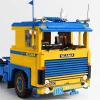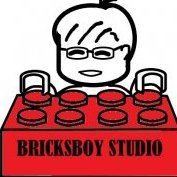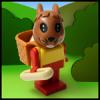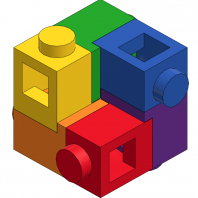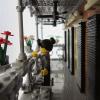Search the Community
Showing results for tags 'classic car'.
Found 15 results
-
The absolute pinnacle of 1950s car design - The 1959 Cadillac The 1959 Cadillac Series 62 is an iconic symbol of automotive luxury and elegance from the golden age of American car design. Released during an era of excess and flamboyance, the '59 Cadillac embodied the spirit of the 1950s with its massive size, extravagant tailfins, and elaborate chrome accents. The Series 62 was a part of Cadillac's lineup, which was known for its opulence and cutting-edge features. The '59 model was no exception. From the moment it hit the streets, the Cadillac Series 62 turned heads with its bold and distinctive styling. The rear tailfins soared to impressive heights, resembling rockets ready for takeoff. They were and still are the biggest tail fins ever put on a production car and mark the absolute peak of the tailfin era. The grille featured a bold, intricate design, and the abundance of chrome trim added to its undeniable presence. Fun fact: When the general public thinks of a pink Cadillac, minds instantly flock to a 1959 model with gorgeous tailfins and sweeping lines. But, the fact of the matter is Cadillac never made a pink 1959 Cadillac. All pink 1959 Cadillacs have been repainted at some point. Under the hood, the '59 Series 62 was powered by a 390 cui V8 engine putting out about 325 hp, providing power for effortless cruising on the open road. The Tri-power equipped Eldorado reached up to 345 hp. It offered a smooth and comfortable ride, with Cadillac's renowned attention to detail evident in every aspect of the car's construction. Inside, the cabin boasted luxurious upholstery, spacious seating, and a host of advanced features for the time, including power windows, air conditioning, and a cutting-edge radio system. The 1959 Cadillac Series 62 quickly became a status symbol, attracting celebrities, dignitaries, and those seeking the epitome of american luxury. Its iconic design and lavish features made it a standout in an era that embraced excess and glamour. Today, the '59 Cadillac Series 62 continues to be a highly sought-after collector's car, cherished by automotive enthusiasts and vintage car aficionados worldwide. Its distinctive appearance and historical significance have solidified its place in automotive history, serving as a timeless reminder of an era when american cars ruled the road with their size, style, and unabashed extravagance. My model This model is not based of the LEGO Ideas Ghostbusters Ecto-1 set. I just think that the set doesn't really look good and decided to do my completely own 59 Cadillac. I had a lot of building this iconic 50s car. I'm really happy with the end result, I think the pink is the perfect color for the 59 Cadillac, even though it is not a original color. This car has an realtivitely detailed interior but does not really support minifigs. The model is 8.4 studs wide, 24.2 studs long and about 5 bricks high. This model is quite stable, so you can use this model as a display piece but you can also play with it. The instructions for this model are easy to follow and for free. If you want to modify this model, no problem, just download the Stud.io 3D file and start building. If there are any problems with the instructions, please contact me. I spent a lot of time and effort in this model so I would be happy if you reply to this topic! I recently saw this one film with like ghost and all kinds of weird stuff… You probably never heard of it. Anyway they had like a 59 Cadillac Miller Meteor...thing. Do you think I should build it? Let me know in the comments! A NEW REALM OF MOTORING MAJESTY ! - ad for the 1959 Cadillac You can find instructions for this model on my Rebrickable page
-
Hello Chevy and Speed Champions fans, The 1957 Chevrolet is a car that was introduced by Chevrolet in September 1956 for the 1957 model year. It was available in three series models: the upscale Bel Air, the mid-range Two-Ten, and the One-Fifty. It is a popular and sought after classic car. Its image has been frequently used in toys, graphics, music, movies, and television. The '57 Chevy, as it is often known, is an auto icon. This model is based on one of my favorite Matchbox as a child. Building instructions are available on the following links: https://rebrickable.com/mocs/MOC-87788/_TLG_/57-chevy-matchbox-version Kit is available here: https://buildamoc.com/products/57-chevy-matchbox-version It is a studless model in the new, 8 studs wide Speed Champions style. It can be built either with fixed doors, or with openable doors. I personally prefer the fixed door version (Speed Champions style) as it is more sturdy and there are no half plate thick gaps below the doors. I minimized the use of stickers to keep the flexibility of the used parts in further builds, therefore only two standard vehicle registration plate stickers are used. My intent was to keep the width-length-height ratio of the real car and this size makes it possible. I wanted to build the model as accurate as possible in this small scale, therefore it contains lots of details: for example the brick built flame decoration, the emblematic front bumper with the vehicle registration plate and front lights, the side view mirrors and the rearview mirror, the tiltable seats etc.. Maybe the most challenging one was the brick built number on the trunk. I tried to fill every unecessary gaps and therefore some tricky build techniques are used. The model has space for two minifigures on the front seats. There are some space before the rear seats too, but it is enough only for a minifigure without legs. Thanks for visiting, _TLG_ '57 Chevy - INSTRUCTIONS 1 by László Torma, on Flickr '57 Chevy - INSTRUCTIONS 2 by László Torma, on Flickr '57 Chevy - INSTRUCTIONS 3 by László Torma, on Flickr '57 Chevy - INSTRUCTIONS 4 by László Torma, on Flickr '57 Chevy - INSTRUCTIONS 5 by László Torma, on Flickr '57 Chevy - INSTRUCTIONS 6 by László Torma, on Flickr '57 Chevy - INSTRUCTIONS 7 by László Torma, on Flickr '57 Chevy - INSTRUCTIONS 8 by László Torma, on Flickr
-
Finally a 50s car again! The 1950 Buick In 1949, Buick introduced a completely new model, but General Motors decided to update the styling of Buick models in 1950. This included the iconic Sweepspear silhouette, four portholes in the hood, and the buck-tooth grille. The 1950 Buick Roadmaster was available as a four-door sedan, Riviera hardtop, convertible, and Estate Wagon, which made extensive use of real tree wood. The Estate Wagon models produced from 1950 to 1953 were the last Buicks to feature real structural wood. Additionally, there were Deluxe versions of the Riviera and sedan, both confusingly named "Riviera." The Roadmaster Sedanettes were also available, but due to slow sales, they were discontinued after the 1950 model year, making them highly sought-after by collectors today. The Buicks produced during this time represent the last of the long-running overhead valve straight eight engines, which still produced approximately 150 horsepower in the Roadmaster. The smaller Buick Special retained its straight eight in 1953 before the entire line received V8 power in 1954. What are Woodies? Wood-bodied station wagons, affectionaly known a Woodies, may be gone, but are certainly not forgotten. Originally invented to transport train passengers and their luggage, they became a american icon and also a huge part of the surf culture. Around 1920, car manufacturers started to combine the easy-to-work-on metal and good-looking and structural wood. Wood for cars was used for 30 more years, but it was getting a more and more rare. This Buick Roadmaster Estate Wagon was built in 1950 when the real woody era was slowly ending. In 1953 the Buick Roadmaster was the last car that used structural wood. From then on, wood was only used as a trim piece and got replaced by wood foil in the 1960s. About my MOC As always, I had lots of fun designing this model because these shapes are something I've never done before. This model would fit great in line with my other station wagons like my '40 Ford Deluxe Station Wagon and my '59 Ford Country Squire I'm really happy with the end result, I think the Dark Green goes great together with the Tan and Dark Orange of the wood. This car unfortunately doesn't have an detailed interior and does not support minifigs. I tried my best but more wasn't . The model is about 8.8 studs wide, 23.3 studs long and 7 bricks high. This model should be quite stable, so you can use this model as a display piece but you can also play with it. The instructions for this model are easy to follow and for free. If you want to modify this model, no problem, just download the Stud.io 3D file and start building. If there are any problems with the instructions, please contact me. I spent a lot of time and effort in this model so I would be happy if you reply to this topic! I plan on building more versions of this car, so stay tuned. It's beautiful! --- It's Brawny! --- It's Buick's alone! -- Advert for the new 1950 Buick grille You can find instructions for this model on my Rebrickable page
- 5 replies
-
- american car
- us car
-
(and 8 more)
Tagged with:
-
Fill 'Er Up! A while back I presented the Bugatti Type 35 Grand Prix pictured being unearthed in an elderly farmer’s barn. This time the little Bugatti is ready to be "fueled up" in a period gas station. Back in the twenties gasoline was sold in quite simple shacks, at times they were drugstores, at times they were pharmacies. What it's sure the early gas stations were very different from modernist or art déco ones. Recently Blocks magazine featured my Bugatti in haystack with step by step building instructions (below) and few days ago I uploaded the pics on my flickr photostream. So if you can't buy a classic racecar you can build it from LEGO! Thanks for stopping by!
- 20 replies
-
- bugatti
- gas station
-
(and 5 more)
Tagged with:
-
MOC #64 Ford Mustang GT500CR Classic video is published now. I designed this Mustang when #10265 coming out, but I didn't satisfy some detail of it. So I put it aside and work on other projects instead. Finally, I picked it up again to complete it. I also expanded my virtual Lego city. You can see what I added in the video :D
-
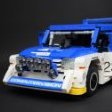
[TC18] Lancia Fulvia Rally Car
All_About_Lego posted a topic in LEGO Technic, Mindstorms, Model Team and Scale Modeling
Hello! Originally I wasn't going to enter this contest - but it was just too tempting - so I am going to give it a go. I have decided to build a Lancia Fulvia Rally car - such as the one you can see below: I have already been working on this for a few days - so the majority of the chassis and some of the bodywork have already been completed. The chassis consists of: Front wheel drive A 2-speed gearbox located over the rear axle - which is also linked to a moving gear stick inside the cabin A functional V4 engine Rear 'leaf spring' suspension Steering - which will hopefully be HOG So far I have attempted to recreate the rear and front bodywork of the car - what do you think? Front by All.About.Lego, on Flickr Rear by All.About.Lego, on Flickr Chassis by All.About.Lego, on Flickr I have tried to use as many Technic elements as possible so far - as I understand that model team-style building is not permitted, but there was a limit to where these could be used - for example I had to make the bonnet out of tiles because of the limited space below! - I hope this is OK?! More updates will come soon! (oh, and if your'e wondering, once its complete it wont be made out of 1000 different colours!) -

42056 Alternate Build - 1971 Datsun 240Z Fairlady
Pleasedontspammebro posted a topic in LEGO Technic, Mindstorms, Model Team and Scale Modeling
I've just finished another Alternate Build of set 42056 and this time it's a Japanese Classic from the seventies. The 1971 Nissan/Datsun 240Z Fairlady was much lusted after in my youth and they have held their appeal ever since. Features are: Full suspension Steering connected to adjustable height driver's wheel with 2.7 turns lock to lock Right hand drive like the original HOG steering 5 speed and reverse "H" pattern shift gearbox Detailed inline 6 cyinder engine connected to the back wheels via the gearbox Opening bonnet and doors with working door latches Cabin features full leg room, window winders (but no windows) and driver's pedals 50 cm long x 22 cm wide x 16 cm high 1.85 kg 2,071 pieces all sourced from set 42056 but you will need one additional piece to enable reverse gear, the MOC still works without it. For more images, details and instructions head over to my MOC page at Rebrickable. -
It's 1964. Vietnam is starting. Martin Luther King receives the Nobel Peace Prize the year Nelson Mandela is jailed. Sony introduces the Video Cassette Recorder, and the computer mouse is invented. Richard Burton and Elizabeth Taylor marry for the first time. The Beatles are riding high in international charts, but I want you to put I Get Around by the Beach Boys on your internal gramophone, grab your shorts and the keys to your Bug, and head on over to Californ-eye-ay coz' we are going surfin'! Apparently. The VW Beetle, or Volkswagen Type I, was already over 25 years old in 1964. It was conceived in Germany in 1938, but let's gloss over that part of its history; production didn't pick up until 1945. Over the car's 65 year production span, an astonishing 21 million were built; it is unsurprising therefore that the Beetle was named in 1999's Car of the Century competition as the fourth most influential car of the 20th century (after the Citroen DS? Really?) and that may explain its inclusion as the logical LEGO follow-up to 2014's 10242 Mini Cooper, which came second in that competition. Review: 10252 Volkswagen Beetle This is not The LEGO Co.'s first VW Beetle set. Believe it or not, it's not even the second - many of you will remember the largely studded 10187 from 2008. To find the first, we have to go all the way back to the first year of LEGO mass-produced toys - 1958 - when an ambiguously numbered die-cast metal 260 VW Beetle was available; several iterations of the Beetle featured in the early days of LEGO metal cars, including one from 1964, but I believe 10187 was the first to be built in LEGO bricks. This latest offering joins the Mini in the recently introduced LEGO Creator Expert range. It's a very different bucket of worms to the last Beetle, making use of curves and angles rather than its predecessor's studs-up sculpture, and ascends to the mainstream another peripheral colour: Dark Azure. Set Information Name: Volkswagen Beetle Number: 10252 Theme: CREATOR Expert Release: 2016 Parts: 1167 Figures: N/A Price: EUR €89.99 - 104.99 | GB £69.99 | US $99.99 | AU $149.99 | CA $129.99 | DKK 799.00 Links ... LEGO Shop ... Brickset ... Bricklink The Box Click for a larger full-frontal image The minimalist Creator Expert packaging shares more in common with the Exclusives sets than the main CREATOR range, but it's smart and allows the set picture to dominate. Here a surf-equipped Beetle drives itself (hilarity ensues) down a sandy track. The set manages to stand out even against the similarly-coloured sea; the choice of surf theme for the set really dictates the box art. I wonder whether the set's colour scheme was decided by the reference image, or whether the artist hunted around for a suitable image. If the latter, they found one, and it's displayed on the right hand side: Click for a larger image Judging by the roof rack, I think the set designer must have used this image for inspiration. It also affects the set's historical accuracy: the real-life Beetle here is a pre-1965 model, given the smaller window apertures. On the back of the box, the sentient car parks itself among the dunes, and leans its surfboard against a conveniently-placed inset of the set features: Click for a larger image I love that. The board even casts a shadow on the inset! The insets show off the set's salient features well, though the main image is rather similar to the box front and I would have shown the car's rear off here. The box measures H 279 x W 478 x D 72 mm (11" x 19" x 3" approx) and weighs 1352 g (3 lb). It is tape-sealed . On the underside is the Volkswagen licensing information, interestingly in the official VW typeface. As is customary for CREATOR sets, the set inventory is displayed on the box top. The Instructions Now, I was under the impression that The LEGO Company had listened to the whinges of its die-hard fan-base, and endeavoured to wrap the instructions and sticker sheets of the more expensive sets to prevent bad things happening. Not so here. My instructions were loose and crumpled in the box. I hope that is just because I have an early promotional copy of the set, and that this doesn't represent a policy change. The single, perfect-bound volume has a cover similar to the box front. There are no technical or historical tidbits, unlike the LEGO Ideas or Architecture sets; I'd like to have seen a bit of information about the Beetle, but not if it would inflate the price of the set. The instruction steps are clear, with part call-outs, and a handy yellow line to show you where new bits are added. This doesn't help when you miss an entire step, as I did! The only other problem I encountered was trying to identify the colour of a 1x1 round stud which looked either white or grey (but probably meant to be flat silver). Sticker Sheet Mercifully, my sticker sheet was only crumpled but not damaged by its journey loose in the box. There stickers are handily numbered, though not unfortunately in the order you apply them. There's a lot of redundancy here, so you can get away with applying as few as 12 of the 24 decals: stickers 13 - 16 are duplicated, and the instructions suggest only applying one of each. You can choose which country's registration to use, though I was delighted to find that there are tiles enough to allow you apply all of them, and change the registration plate to enable a James Bond escape or something. The countries represented are USA, Australia (I think, assuming 'QLD' is Queensland), the UK, and (West) Germany. The Parts The parts are divided into three modules, of 3, 2, and 3 polybags each, as shown here, and the tyres were loose in the box. My first task was to confirm the colour - having not read the official LEGO blurb, I did what I always do when confronted with an unfamiliar colour, which is compare it to a part in a known set. Most of our LEGO is packed away, but fortunately the kids came to the rescue. So Duplo confirms this blue is Dark Azure. The three modules' parts are laid out below. Click each frame for a close-up It's great to see such a large choice of parts in a relatively rare colour, previously found mostly on minifigs and Duplo, or, more recently, in Basic Bricks sets. Prior to this Beetle there were no plates available in Dark Azure. Whether this means there'll be an abundance of regular sets in this colour remains to be seen; I had high hopes for Bright Green after the CITY recycling sets a few years ago but nothing came of that. Unlike, say, Dark Green or Dark Red, I can't see that there'll be much demand for Dark Azure amongst MOCers, though it might make a nice base colour for a re-imagined Classic Space. Otherwise, there are a load of handy SNOT bricks and plates of various kinds, and a few parts of interest: The dark azure corner brick is a new part, ID 24599, and I think would be described as Brick, Round Corner 5x5. Its curvature matches that of the Brick, Modified 1 x 2 x 1 1/3 but it is only three plates high. The 24246 heel-print tile is new this year in a few Mixels sets, and only in white; 23443 bar holder with handle is new, and listed on Bricklink but not yet appearing in any sets. New to me are the 1 x 1 x 3 brick, though it's been around since 2014 and quite common, the Technic axle 3 yellow, and the Ring pull tile, which I can see being very useful. The Round 1x1 tile with gauge featured of course in the Mini and several other sets. The clippy plate is shown only because of the mold difference: both types occur in this set (or my copy, at least) - they are I believe Bricklink types b and d. Then of course there's the new VW print tile. The tile is light bluish grey with a slightly reflective 'negative' print; I would rather have seen a shiny VW 'positive' print on a darker tile, buy hey. There are two spares in this set and I can see these being useful for CITY cars. Finally, there's the vaunted 'updated windshield design': I didn't even notice this until I read the blurb when writing the review: hence the stickers are already on! The mold is a stud less deep, but still quite sturdy; this design would have been quite handy for the Mini whose older design windscreen is also shown here. The Build The build starts with the chassis and is largely pedestrian until towards the end of module one, where SNOT begins to be applied in more detail and things quite suddenly get exciting. In the interest of brevity, I will not describe the build process in detail here, but it is shown in detail on my flickr; I will instead show a few interesting techniques. This is the back end of the car, late in module 1: A large chunk of tan and bley plates and bricks has been inserted, studs facing to the rear, with male and female clips pointing upwards. It's not until module 3 that you find out what the clips are for - they attach the rear window and engine cover. Behind that, a light bley 2x2 SNOT plate tessellates perfectly with a dark bley 1x1 SNOT brick with two 1x1 bley plates: these hold the tail lights; this technique is used in a few places in the set. Interesting SNOT abounds (*thinks of children* ). Here the rear (centre) and front (right) seat uprights are made; the rear one makes use of a stack of headlight bricks alternating studs right/studs up to make a stud reverser that is exactly 3 plates wide; when combined with the left and right halves, this makes 20 plate-heights or exactly 8 brick widths - so the seat rear fits neatly in the gap. I'll remember that technique! The front seats use 1x1 bricks with studs on two sides; these seats are slightly wider than 4 bricks each as they don't need to fit into a confined space - see here (you can also see where I missed a step - the bley plates either side of the rear seat should be a brick higher ). The entire front end of the car is initially attached only via the front axle, and at a half-stud offset: This is then corrected with the judicious application of jumper plates. You'll be able to see more when we look at the underside later. More delightful SNOT-work builds the front wings, including a repeat of the tessellation I pointed out earlier: The small construction I have removed here contains a SNOT plate that is used to correct the sideways-facing studs shown in the picture. I love that sort of thing! You can also see how the headlights are attached, with a technique similar to the Mini's. You'll be able to see more when we come to the features, or check my flickr. The Finished Car I've chosen the German plates for my car, partly because it's a German car, and partly because I put the British number plate stickers on badly. Plus I built it left-hand drive before thinking about it (you can very easily convert it). It does also mean that I can point out The Significance Of The WOB. The bonnet boot luggage compartment cover (from now on, it's 'luggage cover' and 'engine cover', mkay?) has popped open in the above picture, which happens all too easily. Here it is from the reverse angle with the cover closed: The designer has gone to extraordinary lengths to recreate the challenging curves of this iconic vehicle. Look at the nearside headlight: below it is a SNOT-mounted 1x2 cheese wedge; above it a regularly-placed 1x1 cheese next to a 1x3 bow; the contour these form almost perfectly matches the curve of the new 5x5 cover piece forming the wing. The entire wing then marries reasonably neatly to the luggage cover, itself a two-part design attempting to recreate the curves of the real thing. Conscious as I am that the stuff on the roof distracts from the car itself, I removed it: You can see a bit more clearly how the wing curves of the 5x5 corner bricks matches the 1x1 modified bricks at medial ends of both front and rear wings. Strangely, without the roof stuff, the wheels and wings themselves start to look a little too chunky to my eye, but we'll do a formal comparison shortly. Note the use of the new bar with handle parts to mount the door mirrors. From this view, the problem with the car's windscreen is becoming increasingly apparent. There's something I just don't like about it, but it's hard to put my finger on what. Here's a comparison shot of a '64 Beetle: Image from photogallery.classiccars.com It's not a perfect comparator. The wings are indeed a little too chunky on the LEGO version, but that's not the problem with the screen; '64 Beetles had flat screens with an arch shape, which the dark bley tile above the screen fails to recreate convincingly. Let's look at it in more detail from the side: Image from lehnan.hol.es The rake of the windscreen is too steep. It's a small difference, and it ought to be subtle, but combined with the relative loss of curvature of the front end of the roof, it has a dramatic effect making the windscreen look more like a Citroen 2CV than a Beetle. However, aside from the chunky wings and steep windscreen, the overall shape is otherwise remarkably good. Let's move rearward, where things start to get better again. The wonderful curves continue towards the engine compartment: You can see how the tapered door pillar gives gradient to the side of the car, and the 4x4 corner slope helps to smooth the lines from the wider sides to the narrower rear. This part sits, incidentally, on one of these, which defines the slope of the rear window. The engine cover uses a SNOTty construction to achieve a half-plate step, giving the (faint) illusion of a lateral curve. The curves of the rear wings are a little fussier than the front ones, but they still create nice effect even if they are not quite as flared as the real thing: Image from foundonthestreet.net The LEGO version uses grille tiles to depict the iconic air-cooled engine intakes; the effect is not entirely successful, and I wonder if they might have been better off using these (or even these, if they were still available). I do like the rear lights; I'm tempted to replace the deeper of the two bley 1x1 plates under the amber light with a body-coloured one (there are spares in the set!). Front-on, the gap between the luggage cover and bodywork starts to show, but this is the only angle from which it's noticeable. The windscreen, again, looks odd, but the wing curves look great. The tyres are possibly a little too wide. This view isn't quite so forgiving of the rear, which looks better from oblique angles, but I still think the rear is the car's best side. Note the bumpers, made with modern curved pieces, with a hinge to help at the rear; they are nice (but they're crying out for some chrome). I'm conscious at this point that I'm being quite critical. Take a look at this shot from above: Look at the apex of the luggage cover at the front, and follow the ovoid line of the bodywork backwards, round to the side, and in again at the rear, and then back again; then look again at the curves of the wings, especially at the front; then compare to the schematic: It is a remarkable feat to get anything near to the shape of this delightfully contoured car in LEGO. And back down to earth, quite literally: The underside is remarkable for one point, which I alluded to earlier: the axles are not threaded through the chassis as you might expect, but attached almost independently until the structure is built around it. You can also see how the front end of the chassis sits at a half-stud offset, I think in order to accommodate the spare wheel. Features Now let's have a look in a bit more detail. We saw this earlier, but here's another look at the elaborate work going in to get the wings looking as smooth as possible. It's not the most elegant solution, perhaps, and not perfect, but reasonable. Behind the wheel you can see some studs facing outwards - these are from two inverted brackets that form the walls of the luggage compartment; the studs don't connect to anything. Talking of which ... ... here it is, and looking roomier than in real life. The black bit with the VW badge is the fuel tank. The spare wheel just sits there; it rattles around a bit. Being the same size as the Mini spare wheel, it's also too small when compared to the main tyres! Some fiddly jumper plates go to make the door attachment, but the result is smooth and surprisingly sturdy, if a little unsightly. The seat construction is gorgeous, and I like the telephone door handles. The gauge behind the steering wheel is the sole instrument on the dashboard. No radio? I've removed part of the roof to give a better view of the interior. Again, the seat construction is highly effective; it's not obvious here but they are mounted on jumpers to give a brick-wide gap between in which sits the handbrake. Towards the front is a gearstick, made simply from a classic space aerial, but which sits on a semicircular curved brick representing the transmission tunnel ... ... and which continues to the rear: Both front and rear seats flip forward; behind the rear seat is a luggage shelf - true to life - in which the Picnic Rug is stowed. Note further clever SNOT supporting the door pillars. I alluded to this earlier, but here is how the rear window and engine cover are fixed: The upward-pointing male clips hold the window; the two flat silver (these are the ones that caused me trouble in the build) 1x1 studs prevent the window collapsing in. It looks fiddly, but it comes together easily and is remarkably durable. And here's what's in the rear: This is a simple but reasonable facsimile of the VW aircooled engine of the original Beetle. It looks like it might be a rotary engine but it's actually a flat 4; the larger wheel looks like it might be the fan, but it's actually the fan pulley - the fan being in the round black thing behind. In case you wanted to know! I think the LEGO version works really well. Finally, there's the window-dressing: A cool-box containing two green bottles and a green can with a ring-pull top, nicely made with simple but clever SNOT, and a surfboard that looks a little thrown together - I think it would be possible to make it without the white protrusions at the tip and the tail, but it's a minor thing. You might also just be able to make out the lip of a white 1x1 tile in the exact centre of the board - why they didn't use a plate here, I don't know. It all fits snugly on the roof rack, the box via one stud, the board by being wedged between the edges and those black rubber cheating-pieces: Comparison to 10242 Mini Cooper I don't have the 2008 Beetle, and anyway this set's immediate ancestor (and main competitor) is 2014's Mini Cooper. How do they compare? Next to the clean Mini, the Beetle's lines do look a little fussy. The Mini also highlights another minor complaint about the Beetle - the lack of chrome (or metallic silver, at least); though I understand that the Beetle would require a lot of silver parts or it would appear mismatched. The front end of the Mini is so good that meaningful comparison is lost; the Beetle is, after all, a much more difficult shape to render in LEGO. This really isn't a fair comparison! Everything about that Mini is spot on - probably the only thing about it I would change is the tinted windows. So how do they sit together on the shelf? Pretty well, actually, though the scale is off, and the Mini is noticeably larger than it ought it be compared to the Beetle (I estimate it would need to be 3 studs narrower to be at the correct scale). But who cares about that when they look so good! If you had to choose, which would you buy? The Mini, despite slightly fewer pieces, is more expensive, though only just - this may be a licensing issue. The Beetle is a more interesting build, even if the end result isn't quite so good. Here is how I would sum up this comparison: people might say of the Beetle, 'Wow, that blue LEGO car looks like a Beetle!' But they would say of the Mini, 'you know, that Mini model is actually made of LEGO!' But is that a good thing? Maybe it's all down to the Battle of the Picnics: Conclusion This has been a really difficult set to review. Inspired in no small way by the joy that is the Mini, I was eagerly anticipating this set, and really wanted to love it. I like it, but do I love it? I'm not so sure. The parts selection is interesting and useful, and largely in an unusual colour. The build is fun and instructive. The way those curves are achieved is delightful ... but it's just not quite accurate enough. I've been spoiled by the Mini's near-perfection, and this is a much more difficult and less forgiving original, so it's understandable - but disappointing all the same. Design 7 It's just not quite a Beetle, though it's close. Parts 8 A useful selection and unusual colour. More chrome or silver would be welcome. And what's with the crumpled instructions, TLG? Build 9 Fun, engaging, and instructive. Features 7 Opening compartments, doors, folding seats, picnic stuff, but this is a display set, really, and the cool box and surfboard are actually a bit of a distraction. Give me chrome instead! Value 9 At under £70 this is really good value - in the UK, at least. Overall 80% My Score 7/10 Do I like it? Yes. Do I love it? No. Would I buy it (if I didn't already have it)? Oh yes. Do I want to see more classic vehicles? Absolutely. I just wish they'd tilted that windscreen ... Thanks for reading! I hope you enjoyed the review. Comments welcome. Rufus Resources 1. VW Beetle on Wikipedia 2. VW air-cooled engine My flickr album
-
Just two classic vehicles... so far. The first one is a small compact city car with a street-racing paint job. A build that I dug up from my "lost" LDD days before the dark ages of high school and college, but updated and redesigned with new pieces, building techniques. The goal was to make a tiny car to fit two minifies side by side, while still keeping it as small as possible. It's still large and bulky, but I blame the weird proportions of the Minifig for that. Inspired by the classic Mini Cooper and the Fiat 126 (the Polski, as East Europeans know it) The second one is a VW Camper Van, inspired by Hachiroku's design. Actually, most of the inner body was copied from him, as he has posted video instructions. I took that as a basis but I changed the shaping to be more rounded like the real thing. Not much else to be said about this build. Lots of crazy building techniques involved. Took me months to design the front. I want to make more, I just don't know what to build next. Any ideas?
-
- classic car
- vw camper van
-
(and 1 more)
Tagged with:
-
[Edit, 10 October 2018] Note: This thread is discontinued. If you're interested in more cars of this kind please join me on Flickr. [/Edit] Hi all, this is the second batch of the vintage cars series (more vehicles to follow). I have moved the last one (not yet indexed) to this thread. So the first thread (see http://www.eurobrick...opic=73182&st=0) contains 9 vehicles now. #10: Vintage Truck (Gangster Version) A simplified version of the more colourful Vintage Truck you can find here (#9). The presentation is strongly influenced by the amazing work of LegoManiac over on Flickr. Here you can see the vehicle in action. Don't ask me what's all this stuff, I don't ask them either. More pice here. #11: Vintage Fire Truck No openable doors, no detachable roof, no suspension, no steering - but a nice steering wheel and column ;-) This started as a mod of the fire engine from Fire Brigade 10197 but ended quite differently, although I have kept some details (e.g. the ladder). I really love the original truck but it didn't fit within the other vintage cars. I am not too fond of this kind of fenders, I must say - but since it's a truck the height is okay, I think. Couldn't think of a different solution here. Credits to Lego Fire Museum (http://www.mocpages....lder.php/106210), some inspirations) and BigBoy (http://www.1000stein...myimages/bigboy, use of the gray tires). More pics here. Thanks for looking, c&c welcome as usual!
- 47 replies
-
- oldtimer
- vintage car
-
(and 3 more)
Tagged with:
-

RC MG Metro 6R4
All_About_Lego posted a topic in LEGO Technic, Mindstorms, Model Team and Scale Modeling
Hi! so, this is my first post on Eurobricks, I did actually make this model about a month ago, but I thought I might as well share it here too. MG Metro 6R4 by All.About.Lego, on Flickr So, here is a list of its functions: Front and rear independent suspension 4-wheel drive (RC) steering (RC) Working front and rear lights (RC) opening doors opening rear door/boot/bonnet (or whatever else you want to call it)... A detailed interior (with a roll-cage and seats) and loads of stickers... MG Metro 6R4 by All.About.Lego, on Flickr In total this model has 9 PF components: 2 L-motors, 2 pairs of lights, 1 servo motor, 2 AAA battery boxes, and 2 receivers/remotes. It was a bit of a struggle to cram all of them into such a small MOC, while still having independent suspension, and 4-wheel drive, but luckily I still managed to do it! This is the chassis I used for it: Lego Technic Compact 4-wheel drive chassis by All.About.Lego, on Flickr and of course, since I was doing the 6R4, I had no option but to make almost 40 stickers, just so I could recreate the iconic 'Computervision' livery which some of the 1980's group B rally cars had. MG Metro 6R4 by All.About.Lego, on Flickr that's pretty much everything, so I hope you like it, and any comments would be apprecited! Here is the YouTube video: Some more pictures: MG Metro 6R4 by All.About.Lego, on Flickr MG Metro 6R4 by All.About.Lego, on Flickr MG Metro 6R4 by All.About.Lego, on Flickr MG Metro 6R4 by All.About.Lego, on Flickr4 MG Metro 6R4 by All.About.Lego, on Flickr MG Metro 6R4 by All.About.Lego, on Flickr MG Metro 6R4 by All.About.Lego, on Flickr MG Metro 6R4 by All.About.Lego, on Flickr MG Metro 6R4 by All.About.Lego, on Flickr here are some pictures of the original car: MG Metro 6R4 - Original car by All.About.Lego, on Flickr MG Metro 6R4 - Original car by All.About.Lego, on Flickr MG Metro 6R4 - Original car by All.About.Lego, on Flickr- 21 replies
-
Hello everyone! Today i present you my latest and most complex MOC: the AC Cobra 427. The challenge was to create a medium sized car with a complex body structure and add as many technic features as possible making it look good, functional, playable and robust. After going through lots of difficulties i have finally managed to get it done. Here is the result: It features the following: 1. working steering via steering wheel + adjustable steering wheel angle 2. front and rear independant suspension 3. rear differential 4. working V8 piston engine 5. a lever that opens the hood 6. opanble doors 7. openable trunk 8. solid structure -Images removed- More photos on Flickr https://www.flickr.com/photos/27805688@N05/ P.S sorry for my bad photographing and editing skills.
- 20 replies
-
- snot
- classic car
-
(and 8 more)
Tagged with:
-
Hi, I wanted to share this hot rod with you that I made a few weeks ago. To put the vehicle a bit in scene I added a small refueling station. Hope you like it :) Refuel, please! by Vaionaut, on Flickr
- 2 replies
-
- classic car
- vehicle
-
(and 1 more)
Tagged with:
-
Hello and thanks a lot for checking out our latest collaboration! This project features a highly detailed replica of the iconic 1968 Fiat 500 F! Produced from 1957 to 1975 the Cinquecento is considered one of the first real city cars. Read more here. Consisting of 1157 pieces (all add-ons included) this model would be the ultimate for any fan of the Italian legend and definitely a great addition to any Lego collection. The major features are: -detailed exterior with custom prints such as the fiat logo and several prints on the back end -openable hood, trunk and doors -sun-roof (closed and opened) -removable luggage-rack on the back end -suitcase with a bottle and a glass inside -detailed trunk with spare wheel, fuel tank, car jack and a toolbox -engine compartment with a detailed 500cc straight twin engine -detailed interior with movable seats, pedals, handbrake as well as custom prints for the dashboard and the speedometer As mentioned above the proposal for the set includes two sun-roofs which can be interchanged to have the roof either opened or closed. Furthermore, it also includes a removable luggage rack with a suitcase. Now enjoy this beautiful video and make sure to share it! So what are you waiting for? Head over to Lego Ideas and hit the support button to make this become a Lego set! This model was built in Mecabricks and rendered using Blender. Special thanks to zanna for making the awesome pictures and the video! It doesn't only need a good model to make a great project but also a cool way of presenting it. Make sure to check out his Flickr account for more amazing images! Thanks for checking out our post. Make sure to support, comment and share!
- 20 replies
-
Here is my entry for the Expand the Winter Village contest.... presenting the North Pole Motel. The North Pole has become a great vacation destination for visitors from other holiday lands. The set features motel sign, two cozy cabins, and a vintage car for traveling. The cabins are furnished. And here is the car with the top off. Thanks for looking!
- 1 reply
-
- winter village
- motel
-
(and 2 more)
Tagged with:


